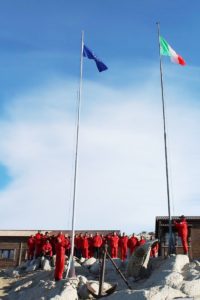 With more than fifty scientific projects done, with the lowering flag’s ceremony the activities of the XXXIII Summer 2017-2018 Campaign of the Italian National Program of Research in Antarctica (PNRA) at Mario Zucchelli Station (WAP ITA-Ø1) of Terra Nova Bay, are finished.
With more than fifty scientific projects done, with the lowering flag’s ceremony the activities of the XXXIII Summer 2017-2018 Campaign of the Italian National Program of Research in Antarctica (PNRA) at Mario Zucchelli Station (WAP ITA-Ø1) of Terra Nova Bay, are finished.
Equally important have been the activities of a logistical nature, maintenance of the structures and preparation of the intermediate airstrip for flights to Concordia Station (WAP MNB-3) and Dumont D’Urville (WAP FRA-Ø1). In this context, the contribution of a specialized engineers team of the Italian Air Force to the realization of the Boulder Clay strip, a remote field 250 km from the base, is of particular importance.
The project, which is developing during the last expeditions, will see this infrastructure acquiring greater flexibility of access to the Mario Zucchelli Station, allowing it to become an important hub for the movement of international scientific personnel operating in the northern part of the Ross Sea.
Italian Army, Navy and Air Force have guaranteed as every year, full support to the research and logistics activities within the Antarctic Continent; 25 specialists of the 3 Armed Forces have been involved: mountain scouts, pilots, weather forecasters, mechanics, riders and divers gave a great contribution to the success of the Summer campaign.
research and logistics activities within the Antarctic Continent; 25 specialists of the 3 Armed Forces have been involved: mountain scouts, pilots, weather forecasters, mechanics, riders and divers gave a great contribution to the success of the Summer campaign.
Read more at: http://www.aeronautica.difesa.it/comunicazione/notizie/Pagine/20180219_Antartide-conclusa-la-XXXIII-spedizione.aspx
Thanks and credit: Defence Ministry-Italian Air Force

 Tourist numbers on the Icy Continent have grown by twenty times in 30 years. Tourism in Antarctica has risen from fewer than 2,000 visitors in the 1980s to more than 45,000 visitors from around the world last year. The number of people travelling to the frozen continent dipped during the economic recession of the late 2000s, but rose again in recent years, according to data kept by the Rhode-Island based International Association of Antarctic Tour Operators.
Tourist numbers on the Icy Continent have grown by twenty times in 30 years. Tourism in Antarctica has risen from fewer than 2,000 visitors in the 1980s to more than 45,000 visitors from around the world last year. The number of people travelling to the frozen continent dipped during the economic recession of the late 2000s, but rose again in recent years, according to data kept by the Rhode-Island based International Association of Antarctic Tour Operators.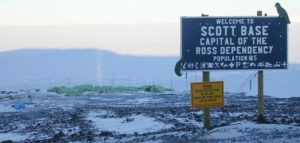 As the base was named after British explorer Robert Falcon Scott, the New Zealand flag was raised on a flagstaff that had been used by Scott at Hut Point in 1903. Originally established to support the privately run Commonwealth Trans-Antarctic Expedition of 1955-58, it was to accommodate both the New Zealand party and a party of New Zealand scientists attached to the expedition who also contributed to the International Geophysical Year. These parties were the first to spend winter over at Scott Base. At the Completion of the expedition, Scott Base became the property of the New Zealand Government in agreement with the Ross Sea Committee. Source:
As the base was named after British explorer Robert Falcon Scott, the New Zealand flag was raised on a flagstaff that had been used by Scott at Hut Point in 1903. Originally established to support the privately run Commonwealth Trans-Antarctic Expedition of 1955-58, it was to accommodate both the New Zealand party and a party of New Zealand scientists attached to the expedition who also contributed to the International Geophysical Year. These parties were the first to spend winter over at Scott Base. At the Completion of the expedition, Scott Base became the property of the New Zealand Government in agreement with the Ross Sea Committee. Source:  II3BOVE is one of the Special Callsign to be aired, along with several others, within the initiatives of the 15th Antarctic Week 2018 scheduled from 17 to 25 February. In particular II3BOVE (WAP-271) aims to remember the first Italian Scientific Base in Antarctica, set in January 1976 by Cav. Renato Cepparo (I2VZP) and named after Giacomo Bove, the Italian explorer who at the end of 1800 sailed to the South to arrange an expedition on the Antarctic Continent. The Base, was active until 20th February 1976 as I1SR/MM.
II3BOVE is one of the Special Callsign to be aired, along with several others, within the initiatives of the 15th Antarctic Week 2018 scheduled from 17 to 25 February. In particular II3BOVE (WAP-271) aims to remember the first Italian Scientific Base in Antarctica, set in January 1976 by Cav. Renato Cepparo (I2VZP) and named after Giacomo Bove, the Italian explorer who at the end of 1800 sailed to the South to arrange an expedition on the Antarctic Continent. The Base, was active until 20th February 1976 as I1SR/MM. only eight months after its construction and now only a stone path remains to remember its foundations. II3BOVE wish to recall the facts and remember the memory.
only eight months after its construction and now only a stone path remains to remember its foundations. II3BOVE wish to recall the facts and remember the memory.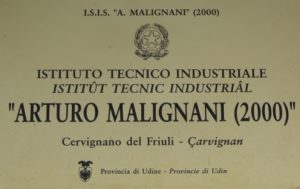 activity promotes with scientific research.
activity promotes with scientific research.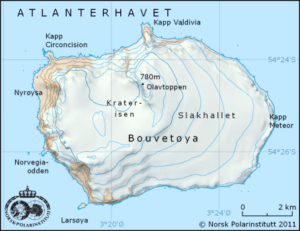 Cape Circoncision (Norwegian: Kapp Circoncision) (54° 23′ 48″ South, 3° 17′ 30″ East) is a peninsula on the north-western edge of subantarctic Bouvet Island.
Cape Circoncision (Norwegian: Kapp Circoncision) (54° 23′ 48″ South, 3° 17′ 30″ East) is a peninsula on the north-western edge of subantarctic Bouvet Island.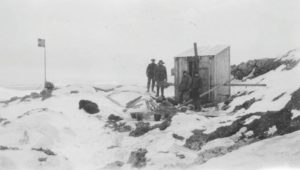
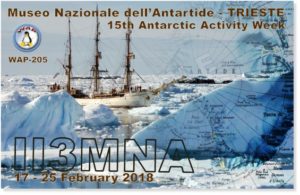 Special callsign II3MNA WAP-205 is on the air during the15th Antarctic Week 2018 operating from MNA – “Museo Nazionale dell’Antartide” in Trieste, Italy. QSL via IQ3TS
Special callsign II3MNA WAP-205 is on the air during the15th Antarctic Week 2018 operating from MNA – “Museo Nazionale dell’Antartide” in Trieste, Italy. QSL via IQ3TS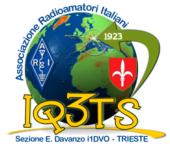 Trieste exposition is organized in a surface of 600 sq. meters, where valuable collections, attractive sceneries and multimedia products, underline current scientific subjects, like climate change, anthropic impact on the environment, biodiversity and space research. This Museum is divided in three sectors: the first one is devoted to Antarctic historical cartography, including valuable ancient maps; the second sector is dedicated to the conquest and exploration of the Antarctic continent, highlighting the three pioneers, protagonists of the most difficult adventures of the world: Scott, Shackleton and Amundsen; the third and last sector is focused exclusively on the Italian expeditions from the 900’s until nowadays organized and realized by “Progetto Nazionale delle Ricerche in Antartide” (PNRA).
Trieste exposition is organized in a surface of 600 sq. meters, where valuable collections, attractive sceneries and multimedia products, underline current scientific subjects, like climate change, anthropic impact on the environment, biodiversity and space research. This Museum is divided in three sectors: the first one is devoted to Antarctic historical cartography, including valuable ancient maps; the second sector is dedicated to the conquest and exploration of the Antarctic continent, highlighting the three pioneers, protagonists of the most difficult adventures of the world: Scott, Shackleton and Amundsen; the third and last sector is focused exclusively on the Italian expeditions from the 900’s until nowadays organized and realized by “Progetto Nazionale delle Ricerche in Antartide” (PNRA).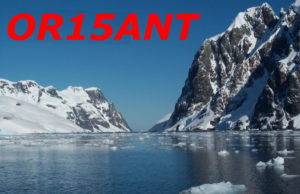 Jean Pierre Hubert ON7ZM, was in Antarctica in Feb 2009 with F5PFP; a great expedition still on the memory of many DXers and Antarctic hunters. Together they did activate several remote sites and Research Bases, some of them very rare!
Jean Pierre Hubert ON7ZM, was in Antarctica in Feb 2009 with F5PFP; a great expedition still on the memory of many DXers and Antarctic hunters. Together they did activate several remote sites and Research Bases, some of them very rare!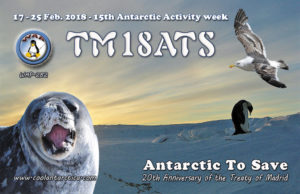 Two more days then the 15th AAW will officially start.
Two more days then the 15th AAW will officially start. Russian President Vladimir Putin was awarded a prize by the Russian Geographical Society in the category “Popularization of natural, historical and cultural heritage of Russia”.
Russian President Vladimir Putin was awarded a prize by the Russian Geographical Society in the category “Popularization of natural, historical and cultural heritage of Russia”.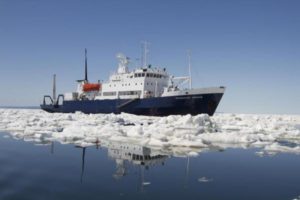 From a message sent (right now) by High Seas Satellite Phone, John Landrigan (K4RXP) said that KA4RXP/MM WILL NOT be operational from February 9 to March 8, 2018 due to failure of two relays in auto tune unit.
From a message sent (right now) by High Seas Satellite Phone, John Landrigan (K4RXP) said that KA4RXP/MM WILL NOT be operational from February 9 to March 8, 2018 due to failure of two relays in auto tune unit.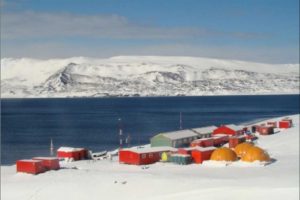 Gabriel de Castilla is actually a Spanish Research Station located on Deception island in the South Shetlands Group, but it was first a military shelter (called Gabriel de Castilla Refuge), when it was constructed during the 1989/90 campaign. (see thetwo pics here below on the right)
Gabriel de Castilla is actually a Spanish Research Station located on Deception island in the South Shetlands Group, but it was first a military shelter (called Gabriel de Castilla Refuge), when it was constructed during the 1989/90 campaign. (see thetwo pics here below on the right)
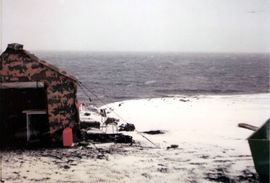 expeditions; six Spanish Army officials took part in the first campaign (1987-88).
expeditions; six Spanish Army officials took part in the first campaign (1987-88).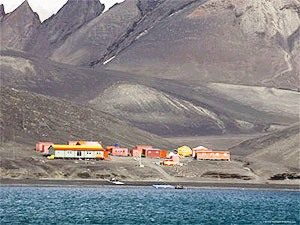 Polar projects are usually funded by the National Plan for Research, Development and Innovation after a peer-review process of proposals.
Polar projects are usually funded by the National Plan for Research, Development and Innovation after a peer-review process of proposals.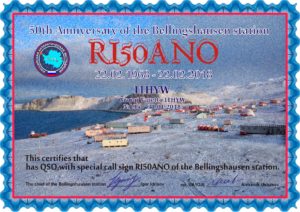 Don’t forget to contact Alexandr A. Ushakov, UA1OJL, who is actually operating from Bellingshausen Station as RI5ØANO to celebrate the 50th Anniversary of its foundation.
Don’t forget to contact Alexandr A. Ushakov, UA1OJL, who is actually operating from Bellingshausen Station as RI5ØANO to celebrate the 50th Anniversary of its foundation. Expedition vessel M/V Ivan Papanin, after completing cargo operations at Bharati Station (WAP IND-Ø4) Larsemann Hills (69° 24’ 24.4” South, 76° 11’ 42.9” East) started her onward journey at 23:35 Hrs local time (18:35 UTC) on Monday, 05 February 2018 heading to the second Indian Station Matiri (WAP IND-Ø3) at Schirmacher Oasis (70° 46’ 00” South, 11° 43’ 50.8” East).
Expedition vessel M/V Ivan Papanin, after completing cargo operations at Bharati Station (WAP IND-Ø4) Larsemann Hills (69° 24’ 24.4” South, 76° 11’ 42.9” East) started her onward journey at 23:35 Hrs local time (18:35 UTC) on Monday, 05 February 2018 heading to the second Indian Station Matiri (WAP IND-Ø3) at Schirmacher Oasis (70° 46’ 00” South, 11° 43’ 50.8” East).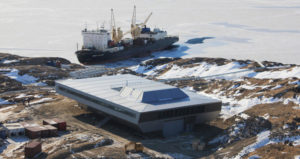 station (see stock pic aside)
station (see stock pic aside) For those who did not know, in 1975 the first Italian adventure in Antarctica did start by a private expedition carried out by a Milanese entrepreneur: Renato Cepparo.
For those who did not know, in 1975 the first Italian adventure in Antarctica did start by a private expedition carried out by a Milanese entrepreneur: Renato Cepparo.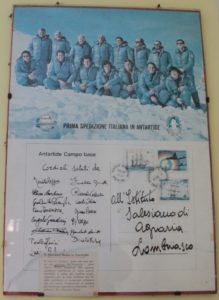 Now, going out the gymnasium of the Salesian Institute of Lombriasco (Turin, Italy) I did find, hanging on a wall, a postcard signed by the members of the Cepparo expedition, sent on December 25, 1975 from Antarctica to the Salesian Institute of Agriculture of Lombriasco; besides being a precious rarity, it’s a real scoop!
Now, going out the gymnasium of the Salesian Institute of Lombriasco (Turin, Italy) I did find, hanging on a wall, a postcard signed by the members of the Cepparo expedition, sent on December 25, 1975 from Antarctica to the Salesian Institute of Agriculture of Lombriasco; besides being a precious rarity, it’s a real scoop!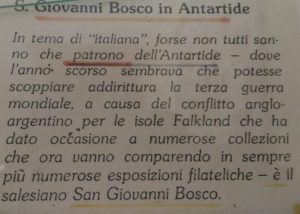
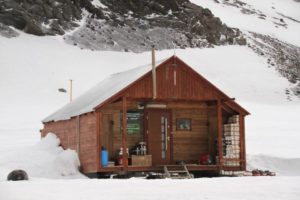 Lions Rump Refuge (62° 06′ South, 58° 05′ West) is a strip of ice-free beaches, moraines and rocks, located on the King George Bay. It is separated from Arctowski Station (WAP POL-Ø1) by a glacier and the waters of the Bransfield Strait. The majority of this area is protected as ASPA 151 (Antarctic Special Protected Area), which in general can be called the equivalent of our nature reserve. The name of the refuge comes from the rock,Lions Rump rlocated in the ASPA.
Lions Rump Refuge (62° 06′ South, 58° 05′ West) is a strip of ice-free beaches, moraines and rocks, located on the King George Bay. It is separated from Arctowski Station (WAP POL-Ø1) by a glacier and the waters of the Bransfield Strait. The majority of this area is protected as ASPA 151 (Antarctic Special Protected Area), which in general can be called the equivalent of our nature reserve. The name of the refuge comes from the rock,Lions Rump rlocated in the ASPA.